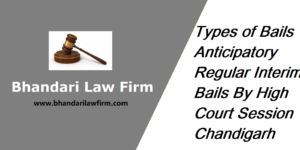Misuse of Section 498A and Section 406 in India: Balancing Justice
Introduction: Section 498A and Section 406 of the Indian Penal Code (IPC) have been instrumental in addressing the issue of cruelty against women within marriages and the criminal breach of trust. However, these provisions have also been subjected to widespread misuse. In this blog, we will explore the misuse of Sections 498A and 406 in India, and the need for a balanced approach to protect genuine victims while preventing misuse.
Section 498A: Dowry Harassment and Cruelty
Section 498A of the IPC deals with the offense of cruelty by a husband or his relatives against a woman. It was enacted with the intent of protecting married women from harassment and cruelty. However, the misuse of this provision has been a matter of concern.
Section 406: Criminal Breach of Trust
Section 406 of the IPC is invoked in cases where there is an alleged misappropriation or withholding of a woman’s ‘streedhan’ (property given to her at the time of her wedding). While this provision is meant to safeguard a woman’s property rights, it, too, has witnessed misuse.
Misuse of 498A and 406: The Problem
The misuse of these sections has led to the wrongful harassment of individuals, including the elderly and children. False complaints have often been filed as a means of revenge or to manipulate divorce or alimony proceedings. This misuse has tarnished the credibility of the provisions and placed an undue burden on the accused.
Also Read: Family and Divorce Laws
Case Laws Demonstrating Misuse
Sushil Kumar Sharma v. Union of India (2005): In this landmark case, the Supreme Court acknowledged the misuse of Section 498A, terming it “legal terrorism.” The Court highlighted the need for guidelines to prevent frivolous complaints and arrests.
Savitha v. State of Kerala (2012): In this case, the Kerala High Court quashed a Section 498A case, stating that it was a mere tool for harassment and observed that personal vendettas had resulted in such misuse.
Balancing Justice: The Way Forward
Stringent Scrutiny: Courts need to carefully scrutinize Section 498A and 406 cases to differentiate genuine complaints from false ones. They should require substantial evidence before allowing arrests or legal actions.
Mediation and Counseling: Promoting mediation and counseling in marital disputes can help resolve issues without the need for criminal proceedings.
Legal Reforms: There is a need for legal reforms to protect the rights of the accused. These might include making mediation a mandatory step before filing a Section 498A complaint and strict penalties for filing false complaints.
Awareness and Education: Educating women about their rights and the proper use of these sections is crucial to prevent misuse. Legal literacy can empower individuals to make informed choices.
Swift Justice: Timely disposal of cases is essential to ensure that justice is served promptly, and the accused are not subjected to prolonged legal battles.
Conclusion
While Section 498A and Section 406 serve the important purpose of protecting women from cruelty and ensuring their property rights, misuse of these provisions has posed significant challenges. Striking a balance between protecting genuine victims and preventing misuse is essential. Legal reforms, awareness campaigns, and a more cautious approach from the judiciary can help ensure that these provisions fulfill their intended purpose without causing undue hardship to the accused. A nuanced and careful approach to handling cases under these sections is necessary to maintain the integrity of the Indian legal system.



